Have you ever stopped to appreciate how amazing these 13 gates of Lahore are? They’re like amazing works of art that show off the incredible skills of the people who built them. And when we study and take care of them, we can learn a lot about how cities and buildings were designed back in the day.
Lahore as a Historical City Preserves the Cultural Heritage of the Mughals
During the reign of the Mughal emperor, a fortified wall was erected around Lahore city, which was about thirty feet high and had thirteen gates that served as entry points into the Walled City.
One of these gates, the Delhi Gate, also served as Union Council 27 (UC 27) in Tehsil Ravi of Lahore City District. Over time, some of these gates have deteriorated, leading to concerns about their preservation for future generations. To address this issue, the British authorities took on the task of reconstructing and renovating some of these gates, ensuring their preservation and protection for years to come.
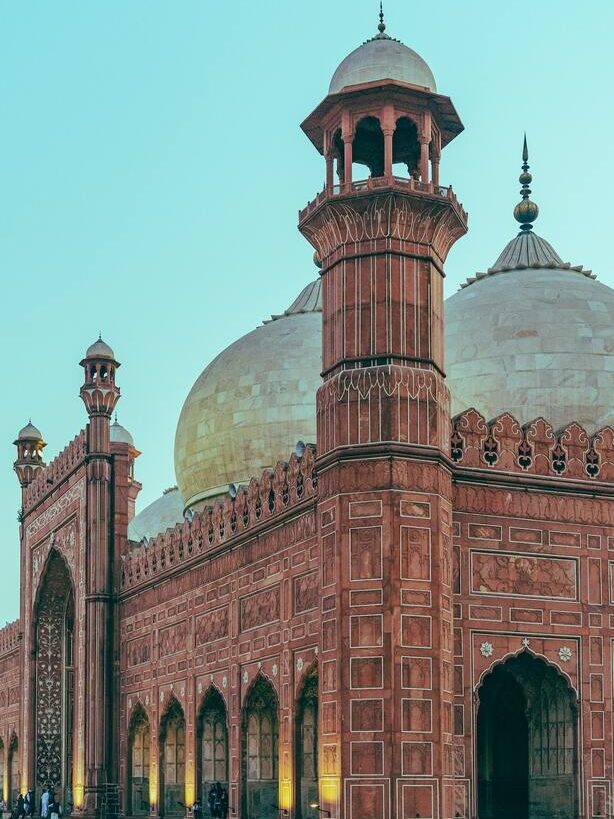
The city of Lahore in Pakistan is a testament to the rich and opulent Mughal era, proudly preserving the cultural heritage of this majestic dynasty. As one of the most influential centers of Mughal rule, Lahore boasts many architectural marvels and artistic wonders that have withstood the test of time.
The city’s vibrant history is etched in its ornate monuments, such as the iconic Badshahi Mosque, the Regal Lahore Fort, and the magnificent Shalimar Gardens, all showcasing the Mughal’s penchant for grandeur and elegance.
Walking through the narrow, bustling streets of the old city, one can still feel the echoes of the past, as Lahore continues to cherish its Mughal legacy. It serves as a living museum that captivates visitors with its cultural splendor and historical significance.
Let’s Have a Tour of the 13 Gates of Lahore

The 13 gates of Lahore stand as a remarkable testament to the city’s rich historical and cultural heritage. They showcase the artistic and engineering skills of past civilizations, with each gate boasting a unique design that reflects the era in which it was constructed. Throughout history, these gates have played a crucial role in maintaining order and security within the city, serving as important administrative checkpoints for collecting taxes, regulating trade, and verifying travelers’ credentials.
Their enduring presence is a constant reminder of the importance of preserving our cultural legacy for future generations to appreciate and admire.
In this blog, you will learn about the history, architecture, and old tales associated with these gates- A complete walkthrough of the 13 gates of Lahore!
- Bhati Gate
- Delhi Gate
- Kashmiri Gate
- Lahori Gate
- Gate Sheranwala
- Gate Akbari
- Gate Masti
- Gate Mochi
- Gate Mori
- Gate Shah Alam
- Gate Taxali
- Gate Yakki Gate
- Roshnai Gate
1. Bhati Gate
The Bhati Gate entrance can be found on the western wall of the Old City. It’s considered to be one of the two oldest entry points into the Walled City, which was responsible for controlling the only major north-south thoroughfare during the Ghaznavid period. According to historical accounts, the gate is named after the Bhati Clan of Rajputs.
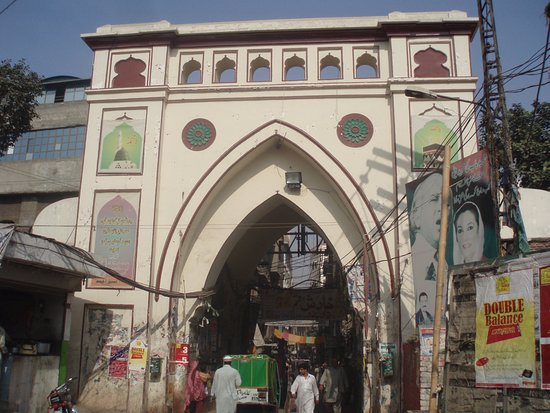
Bhati Gate, also known as Bhati Darwaza in Urdu, is one of the thirteen historic gates found in the Walled City of Lahore, located in Punjab, Pakistan. It serves as a union council situated in the Ravi Zone and is situated near Data Darbar. The gate’s design closely resembles that of the Kashmiri Gate.
History:
Bhati Gate, named after the Bhati Rajput warriors, has a rich historical significance as a hub for arts and literature in Old Lahore. The area inside the gate is famous for its delicious food and just outside it lies the mausoleum of the Sufi saint Ali Hajweri, also known as Data Sahib Ganjbaksh. Qawwali music performances used to take place here every Thursday evening, but they are sometimes replaced with Naats and religious sermons. The gate also serves as the starting point for Lahore’s Hakiman Bazaar and is located in close proximity to the Fakir Khana Museum. The Old City’s Oonchi Mosque can also be found near the gate. Additionally, Bhati Gate serves as Union Council 29 (UC 29) in Tehsil Ravi of Lahore City District. Notably, the renowned poet Allama Iqbal resided in a house near Bhati Gate between 1901 and 1905.
2. Delhi Gate
Naman’s Delhi Gate is the southern entrance to the walled city of Delhi, also known as Shahjahanabad, built in 1638 AD. It connects the modern city of New Delhi to the historic walled city of Delhi and sits in the center of Netaji Subhash Chandra Road (also known as Netaji Subhash Marg) at the edge of Daryaganj.
The Gate was constructed by Emperor Shah Jahan as part of the high fort walls that surrounded Shahjahanabad, the seventh city of Delhi. The emperor would use this gate to reach the Jama Masjid for prayer.
The architecture of the Gate:
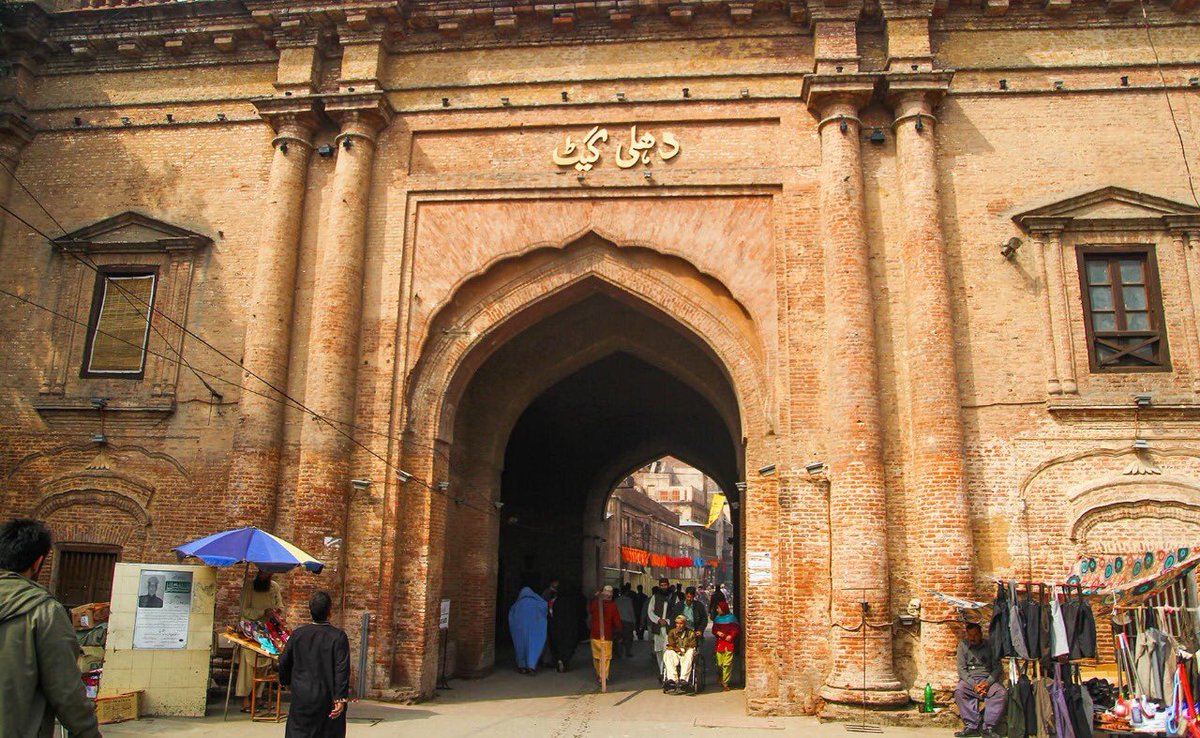
The gate bears a resemblance in both design and architecture to the Kashmiri Gate (1853), which is situated in the northern part of the walled city. Constructed using sandstone, it is a stunning and immense structure. Two stone carvings of elephants stand near the entrance of the gate. The road that leads to the Kashmiri Gate passes through Daryaganj. The Old Delhi Railway Station has been built on a section of the fort wall to the east, while the wall to the west still stands.
3. Kashmiri Gate
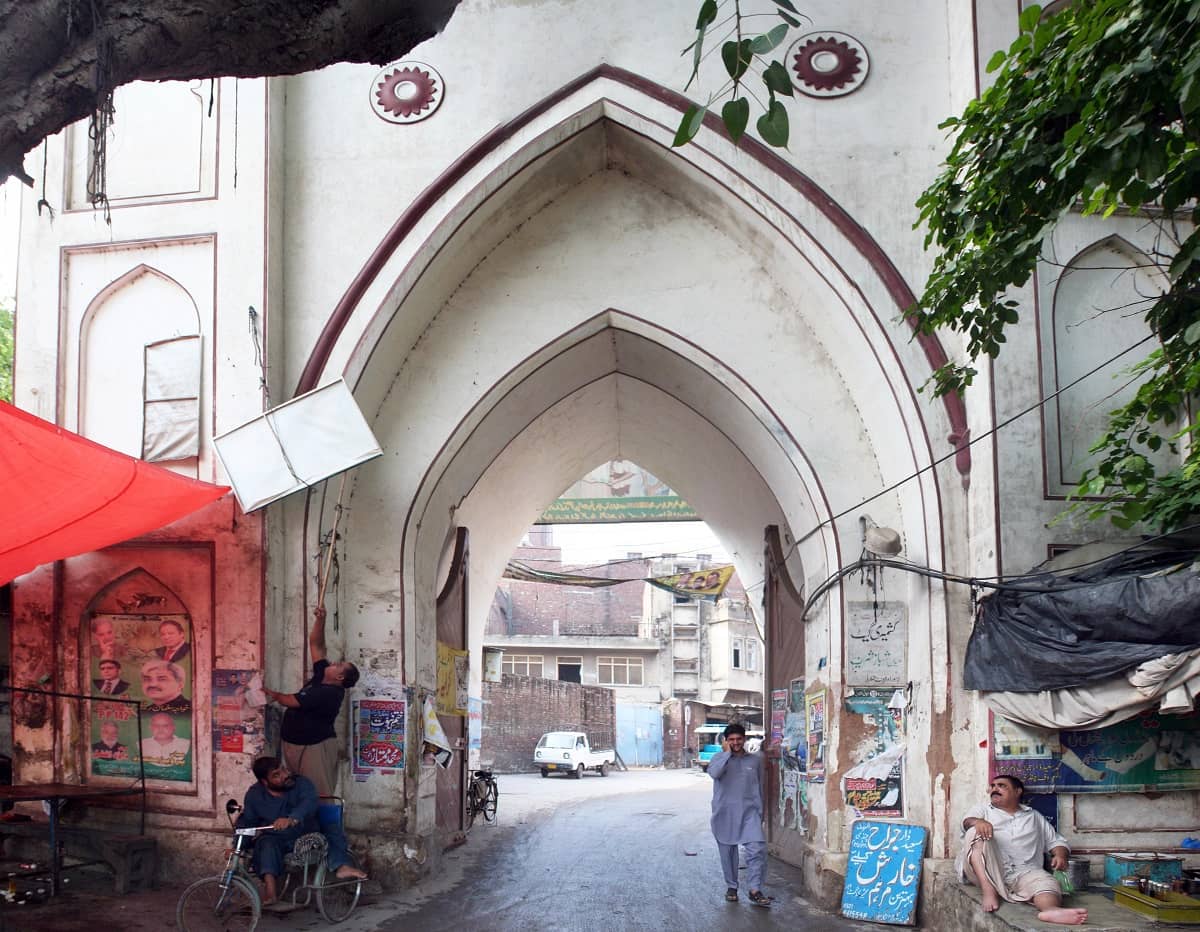
The famous Kashmiri Gate, situated in the heart of Lahore, Pakistan, is a significant landmark that holds historical and cultural value. Among the thirteen gates of the Walled City, it stands out for its unique name, which derives from the direction towards which it faces – the beautiful valley of Kashmir. As one enters the gate, they are greeted by a bustling shopping area and market known as “Kashmiri Bazaar.” Moreover, the gate also houses a girls’ college which adds to its charm and allure. The college’s construction was carried out on an old haveli that belonged to a Shah, and its stunning Mughal architecture is a pleasure for the eyes. All in all, Kashmiri Gate is an excellent example of the rich cultural heritage and architectural brilliance that Lahore has to offer.
4. Lohari Gate
Lohari Gate, the eldest of the thirteen gates in the city, derives its name from the skilled blacksmiths who once resided in the area. This historical landmark underwent renovation during the British rule and remains intact to this day. The vicinity surrounding the gate is currently recognized for its delectable Desi cuisine and traditional Lahori delicacies.
The Red Fort in Delhi can be accessed through the Lahori Gate, which serves as the main entrance. To get to the fort, visitors must walk through a covered street surrounded by arcaded apartments known as Chhatta Chowk. The gate, located on the fort’s western wall, was named after the city it leads to, Lahore, which is part of Pakistan.
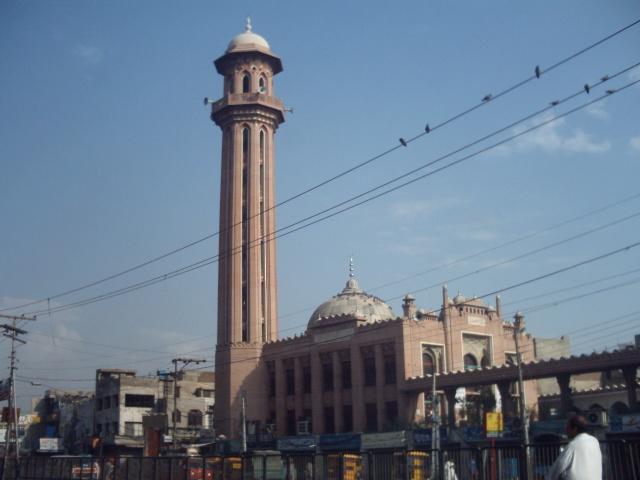
Did you know that there’s a secondary entrance to the Delhi Gate? This entrance is really something to see! It’s made up of three levels and has square, rectangular, and cusped arched panels. There are also semi-octagonal towers that are flanked by two open octagonal pavilions. The whole gate is made of red sandstone, except for the pavilions’ roofs, which are made of white stone. You’ll notice a screen of miniature chhatris consisting of seven miniature marble domes between the two pavilions. And if you look closely, you’ll see flame-shaped battlements continuing around the whole wall. Back in the day, Aurangzeb (1658-1707) added a 10.5-meter-high barbican to the gate, which can be accessed from the north. More recently, in the 1980s, the tower windows were blocked for security reasons against sniper attacks, and a lift was installed in the gate to improve accessibility.
5. Gate Sheranwala
Sheranwala Gate (Lions Gate) is the modern name of the gate. The Sheranwala Gate, also known as Lions Gate, because during Maharaja Ranjit Singh’s rule, the gate was guarded by two caged lions for the city’s protection. Even though it is very old, it still displays the soul of the old walled city!
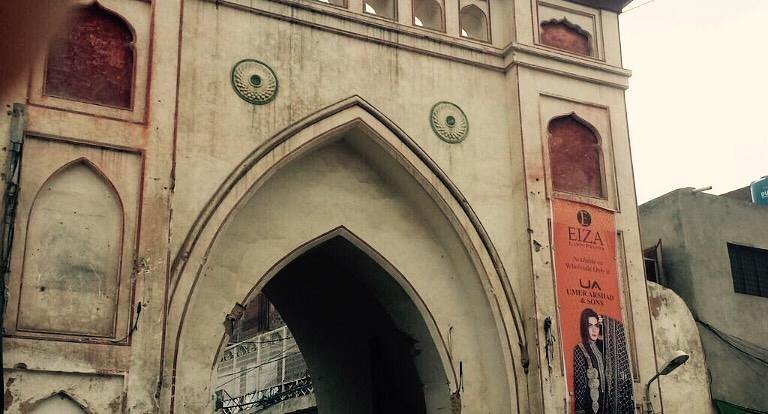
The Gate was built during the Mughal era under the reign of Emperor Akbar. Its original name, Khizri Gate, was inspired by the story of a revered Muslim saint who is said to have crossed the gate and traveled to the Ravi River. Today, the gate remains a testament to the rich history and cultural heritage of the region, inspiring all who visit it with its timeless beauty and mystique.
6. Akbari Gate
In honor of the Mughal emperor Jala-Ud-Din Muhammad Akbar’ (Akbar the Great), Akbari Gate was named after him, as the emperor rebuilt the citadel and town close to Akbari Gate. Akbari Mandi is the biggest retail market in Lahore, with a wide variety of food grains.
Architecture
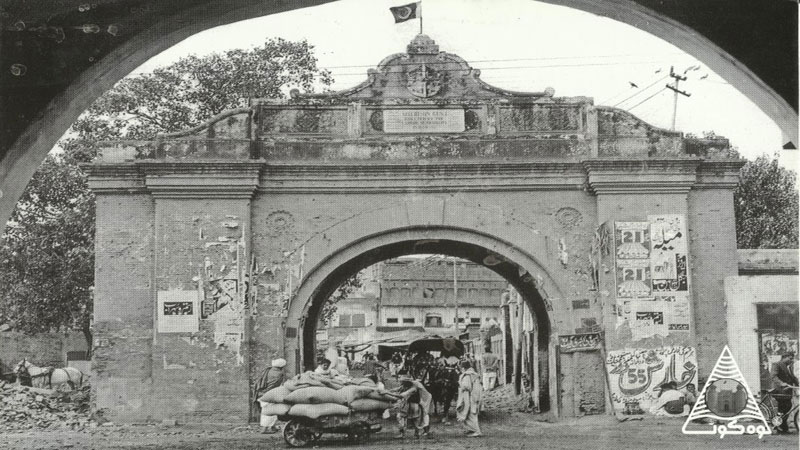
The spectacular entrance, usage of exquisite patterns, outstanding jaali work (decorative stone screens that are delicately perforated), beautiful calligraphy in Persian style, the arrangement of the char bagh garden (a quadrangular garden with the main house in the middle), etc. are all examples of Islamic influence.
7. Gate Masti
The word Masti Gate conjures up images of mystery and enchantment. This gate is one of the thirteen gates that the Mughal Emperor Akbar constructed for the walled city of Lahore. Few gates have as many intriguing traditions around their names as this one does. According to some historians, the royal guard Masti Baloch, who guarded the gate with tremendous devotion and commitment, is the person after whom it was named. He was obedient and protected the gate until his dying breath; as a result, it was named after him in recognition of his efforts.
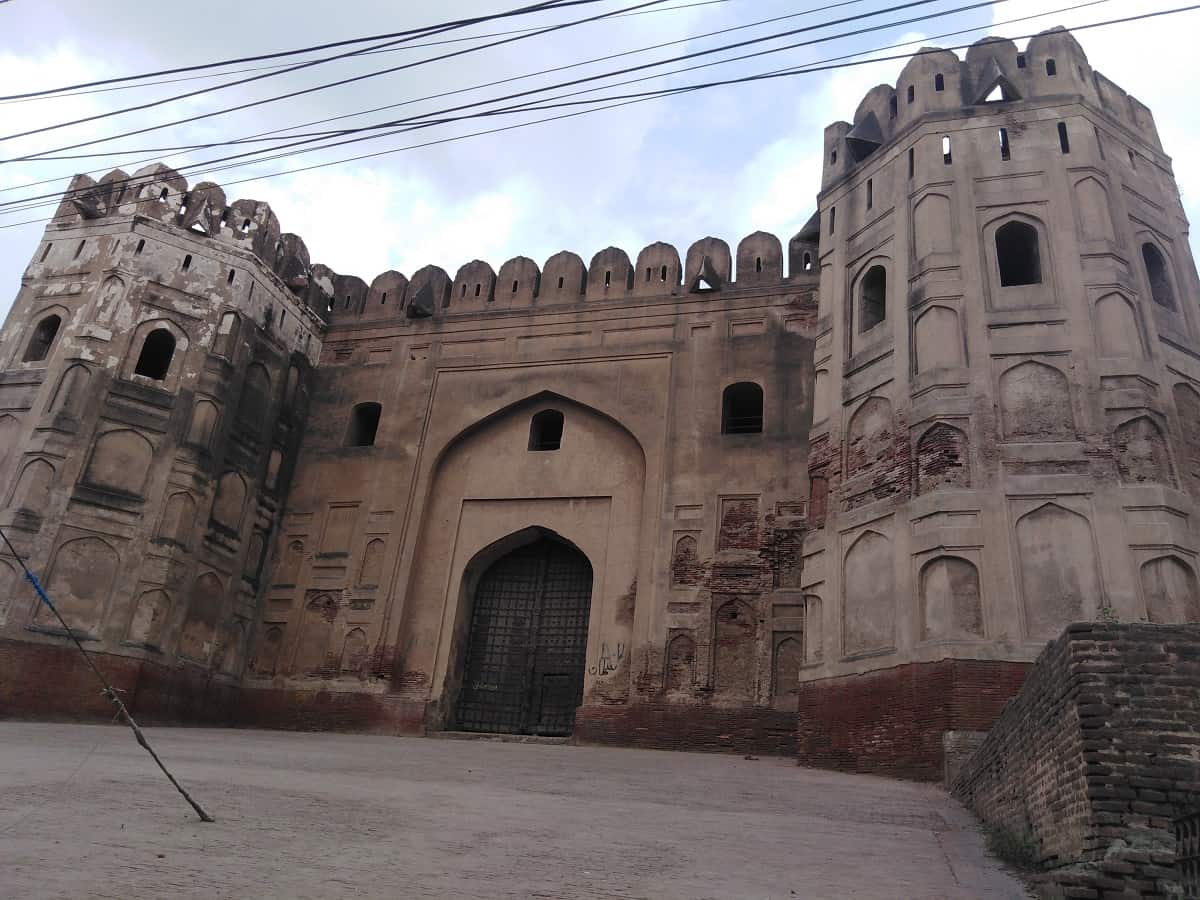
Another legend surrounding the gate is that it was originally called Masiti or Masjidi Gate (Masit is a mosque in the native Punjabi dialect), which was mispronounced as Masti Gate.
This gate links with Taxali Gate and is known for serving the highest quality cuisine, just like other city gates. Famous local foods include particular varieties of naan and roti as well as beverages like lassi, green tea, Kashmiri tea, plethora, and others. This gate was a neighborhood wrestling venue that is no longer often visible inside the walled city. These used to work in every gate, but now it’s said to be a dying sport. Unfortunately, the gate has been abolished & no longer exists. However, the temple should be renovated for visitors, and the monuments inside this gate should be preserved.
Historically, this was the city’s initial entrance to Lahore Fort. That was connected to the fort via Delhi Gate and Masti Gate. Hopefully, we will be able to see this pristine gate once again connected to the Fort.
8. Mochi Gate
The Mochi Gate, also known as Mochi Darwaza, is a gate in the Walled City of Lahore, Punjab, Pakistan, situated between the Akbari Gate and the Shah Alam Gates. It is one of the thirteen gates of the Walled City of Lahore that were constructed by the Mughal Emperor Akbar and linked to a thirty-foot-high fortification wall to protect the city. It is renowned for its dried fruit and nut sellers, sweets, kites, pyrotechnics, and the renowned Mochi Gate Park. Mochi Gate was one of the gates that were destroyed during the riots of 1947.
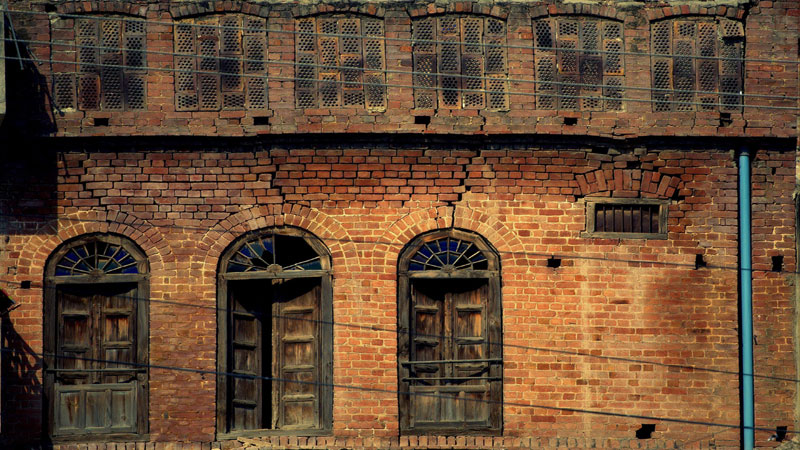
Although the gate’s physical construction no longer exists, its streets still include high-quality architectural structures like the mosque and other buildings. The name of this particular gate is connected to a number of customs. Another Mochi Gate attraction is the historic mosque of Aurangzeb’s instructor, Muhammad Saleh Kamboh.
There are several traditions associated with the name of this very gate. According to some historians, it is named after Moti, a guard of the gate during the Mughal era, who guarded and looked after the gate all his life. On the other hand, however, most historians agree that “Mochi” is the marred form of the Urdu word “Morchi” which means “Trench Soldier”. The Governor’s “Piada” units used to be stationed here. This origin of its name is further supported by the fact that the different streets (mohallas) inside this gate still bear their old names like Mohalla Teer-garan (arrow craftsmen), and Mohalla Kaman-garan (bow craftsmen).
9. Mori Gate
“Mori Gate,” located between the Lahori Gate and Bhati Gate, is the smallest of the city’s gates. It used to transport waste and disposal materials. One of the 13 gates that previously encircled Lahore’s ancient city, Gate Mori of Lahore, also known as Mori Gate, is a prominent figure in both history and culture. Originally built during the Mughal Empire, Gate Mori is located in the western section of the ancient city. Many of the Mughals’ contributions to the cityscape of Lahore, who were noted for their expansive architectural endeavors, are still in place today. Although it is difficult to pinpoint the precise period of Gate Mori’s construction, the architecture is Mughal in style.
The name of the gate, “Mori,” is thought to have come from the Punjabi term for “peacock” in the area. The peacocks that frequented the area around the gate during the Mughal era are probably responsible for the name. These vibrant birds, which are frequently linked to elegance and beauty, came to represent the region and gave origin to the moniker “Mori Gate.” Gate Mori, like the other gates of Lahore, served as one of the entrances into the walled city, giving access to the lively markets, populated neighborhoods, and sacred sites that were enclosed by its protective walls. In the past, the gates were shut at night for security reasons to protect the citizens of the city from outside dangers.
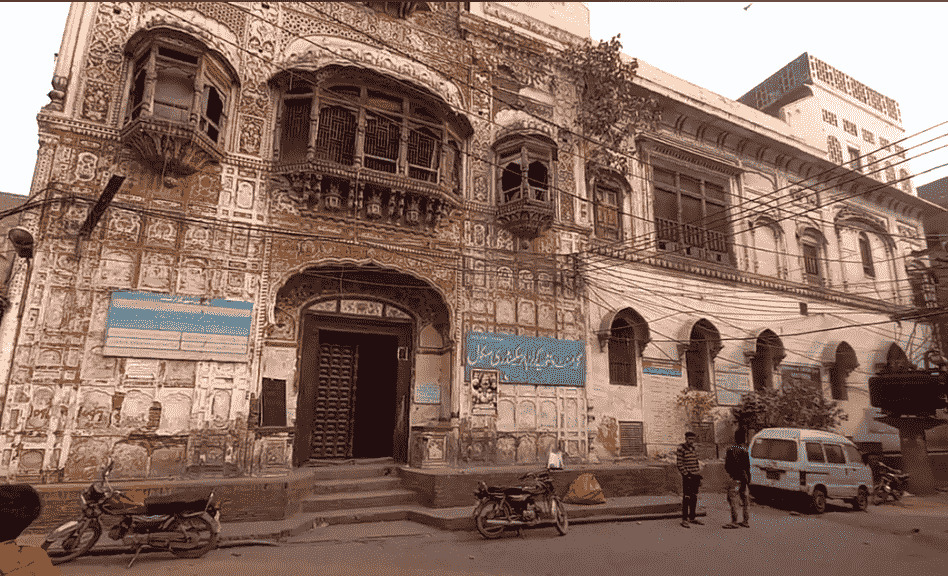
Gate Mori still exists as a representation of Lahore’s cultural history and a link to the city’s colorful past. The gate continues to be a beloved icon for both locals and tourists despite the changes to the surrounding terrain, with contemporary structures and infrastructure encroaching on its historical value. To safeguard and honor the historical importance of Gate Mori, cultural programs and preservation measures have been implemented. To ensure that future generations can continue to be in awe of the gate’s beauty, local officials and history enthusiasts are intent on preserving the architectural integrity of the gate. It’s critical to maintain a balance between development and preservation as Lahore continues to expand and modernize. Gate Mori’s significance as one of the 13 gates of Lahore reminds us of the importance of cherishing our cultural heritage and safeguarding the architectural gems that narrate the tales of our past.
10. Shah Alam Gate
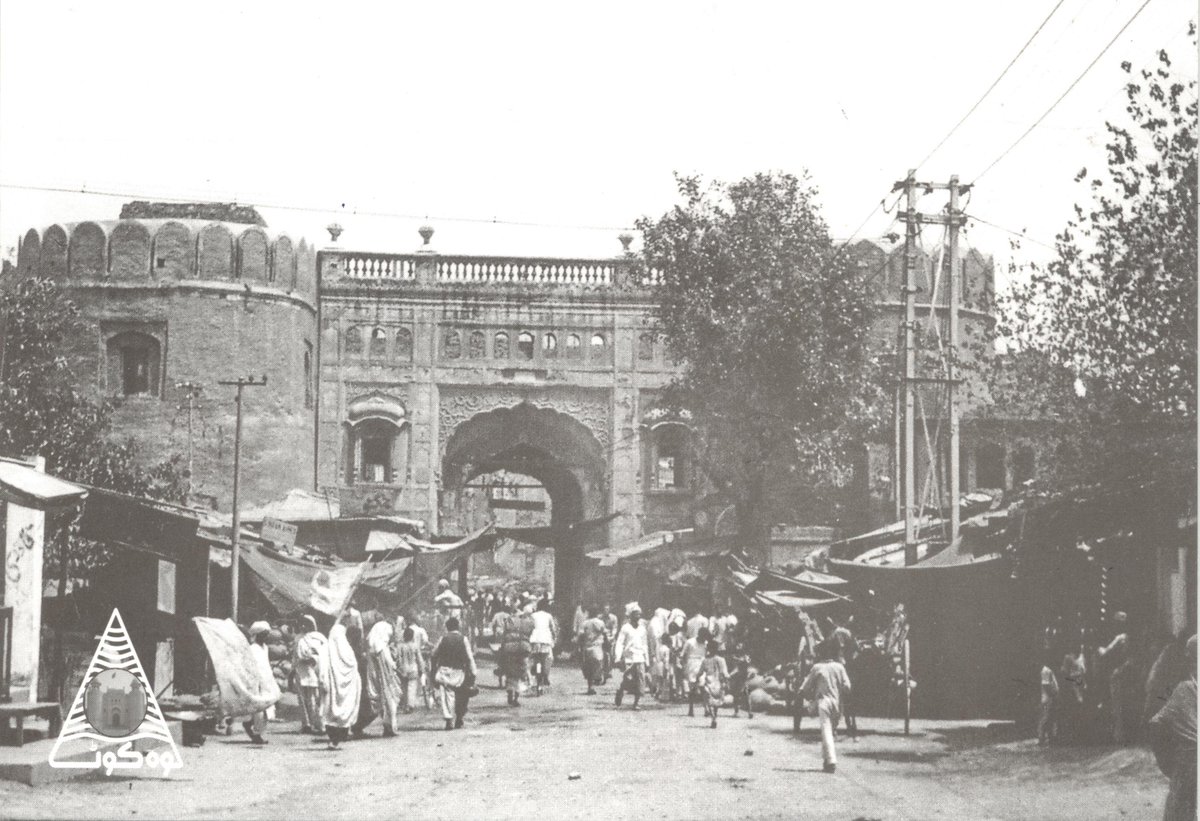
One of the 13 gates that formerly adorned the opulent city of Lahore, Gate Shah Alam is a historically significant structure. Gate Shah Alam, a monument of the Mughal era’s brilliant architectural design, is situated in the busy centre of the walled city. Its grandeur and meticulous workmanship, which were created during the era of Emperor Akbar, have weathered the test of time and serve as a reminder of Lahore’s illustrious history.
Named after the famed Sufi saint Hazrat Shah Aalmiya, whose mausoleum is close by, the gate has a mystical element that adds to its attractiveness. The gate’s impressive front, which is covered with elaborate floral designs and calligraphy, captures the attention of visitors and transports them to a time of richness and grandeur. A beloved representation of Lahore’s past and present, Gate Shah Alam is a timeless wonder that never ceases to awe and motivate those who pass through its historic arches.
11. Taxali Gate

Taxali Gate was constructed during Akbar’s reign as Mughal emperor. It was constructed between 1575 and 1585, during the reign of the Mughal emperor Akbar, and is also referred to as the Taxal or royal mint. The neighborhood around this gate is now well-known across Lahore for its renowned traditional shoe market and a variety of Indian cuisines. The famed Heera Mandi, where the Mughal emperors entertained their intimate friends, was situated near the entrance.
12. Yakkii – Zaki Gate
Yakkii-Zaki Gate, also known as Yakki Gate, was destroyed during the British era and has not been rebuilt since. One of the most illustrious ancient gateways previously graced the magnificent city of Lahore, Pakistan. This gate is quite near to Lahore’s enormous Delhi Gate, and through its narrow, twisting alleyways, you may go to the Royal Trail and view the city’s enormous structures, like the Wazir Khan Mosque and Shahi Hammam. It is a striking representation of the city’s illustrious architectural splendor and extensive cultural history. Even though the gate’s actual construction has been destroyed, you may still observe a few prominent saints’ graves there.
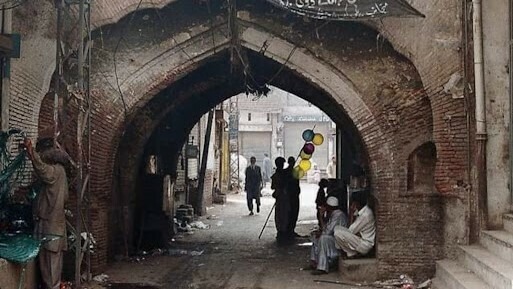
Its name came from the terms “Yakkii,” which means “single,” and “Zaki,” which is the name of a revered saint who is interred nearby. As a reminder of Lahore’s illustrious past, Yakkii-Zaki Gate continues to enthrall history buffs with its ageless beauty, historical relevance, and the tales it conceals behind its venerable walls. Many families that have lived in the area for a ages have now taken ownership of this Gate. Inside the Gate, there is a hospital and a school as well. Due to the fact that this was a residential neighborhood, you can still see some partially destroyed Mughal courtiers’ houses here, including Haveli Nadirwali, Laal Haveli, Nizam Haveli, and Haveli Raja Inder Nath. Putting some effort into this trail will make it a great tourist attraction.
13. Roshnai Gate
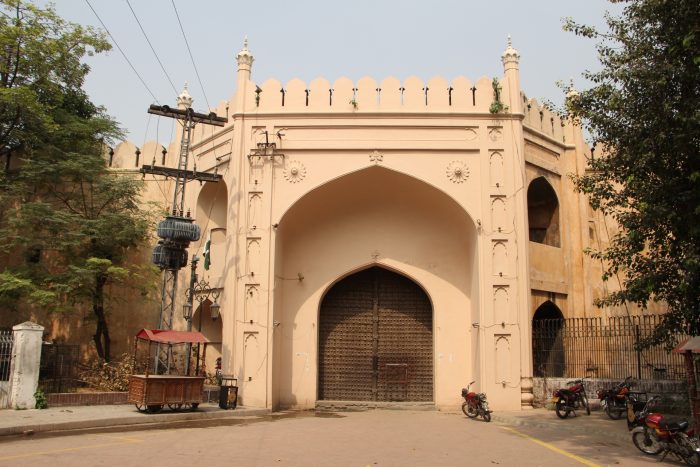
Between the Lahore Fort and the Badshahi Mosque is where you’ll find the Roshnai Gate, also known as the Gate of Lights. The gate was frequently frequented by the Omerahs (elite), courtiers, royal attendants, and retinues since it was one of the prominent entries into the city. The gate was illuminated at night, therefore its name. It is the only gate in Lahore that has been kept in its original shape and is said to be the city’s oldest gate.
Through the Roshnai Gate, city residents, and tourists can access the Royal Fort, Huzuri Bagh, Badshahi Masjid, and Mazar-e-Iqbal, all located in the vicinity of Food Street. The gate is attached to one of Pakistan’s largest mosques, the Badshahi Masjid.
Importance of these Gates in History
The City Gates of Lahore, also known as the Gates of Lahore, carry significant historical importance as they played a crucial role in shaping the city’s development & history.
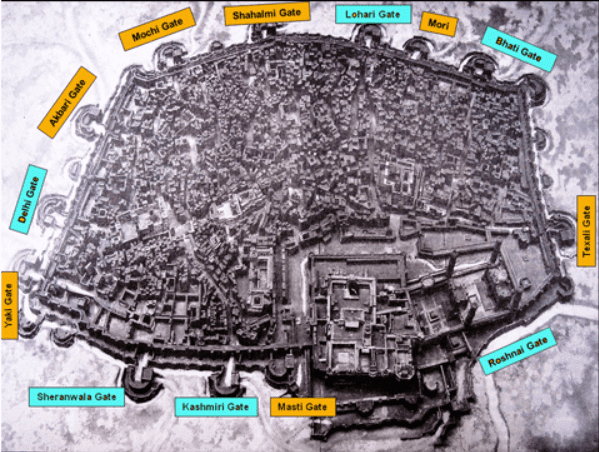
Lahore, being one of the oldest cities in South Asia, has been a strategic center for various civilizations and empires over the years. The city gates were instrumental in defending, administering, and facilitating cultural exchange within the city.
The following are some key points underscoring the significance of the Gates of Lahore in history:
- These Gates were important for defending the city. They had walls, watchtowers, and moats to keep out invading armies and help during the conflict.
- The gates of Lahore have stood witness to countless significant events throughout history, playing a vital role in facilitating cultural exchange and trade. From the emergence and decline of empires such as the Ghaznavids, Mughals, and British, these gates are a tangible link to the past, contributing to the cosmopolitan nature of the area. They remain an observer of historical significance, reminding us of the city’s rich cultural heritage.
- These Gates are remarkable pieces of architecture that highlight the artistic talents and building techniques of their time. Through their preservation and study, we can gain valuable insights into the history of urban planning & architecture.
- Symbolizing the rich history and cultural heritage of Lahore, the Gates of Lahore have captured the hearts of travelers around the world. In addition to their historical essence, they also reflect the city’s growth and resilience over time & offer insights into the broader historical context of Lahore and South Asia, so it is important to honor & study it.
Lahore Heritage – Preserving the Beauty of Ancient Times
Have you ever been to Lahore? It’s the capital of Punjab province in Pakistan and it’s got so much history and culture to explore. There are countless awe-inspiring buildings, monuments, and other fascinating artifacts that have been around for centuries.

It is super imperative that we prioritize the protection and preservation of Lahore’s invaluable heritage for future generations. Numerous efforts have been made over the years to ensure that the city’s history remains safeguarded.
Lahore’s historical landmarks have been restored and conserved with great care, preserving their original grandeur. The restoration efforts have involved meticulous attention to architectural elements, addressing structural issues, and safeguarding artworks and artifacts. Creating awareness about the importance of heritage preservation among the local community and tourists is vital. Public campaigns, educational programs, and guided tours are organized to enlighten people about the historical significance of various heritage sites and the need to protect them. Integrating heritage preservation into urban planning and development is crucial to ensure that new construction projects do not encroach upon or harm historically significant areas. It is essential to balance modernization with preservation to maintain the city’s character and soul.
There are several ways to preserve Lahore’s rich cultural heritage. Regular archaeological excavations and research help uncover hidden gems and historical artifacts buried beneath the city’s surface. These discoveries contribute to our knowledge of Lahore’s past and help preserve its heritage. Establishing museums and exhibitions dedicated to Lahore’s heritage allows for the safe display of precious artifacts and documents. These museums serve as educational resources and promote the appreciation of the city’s cultural legacy.
Organizing cultural festivals and events that celebrate Lahore’s heritage is another way to draw attention to the importance of preserving its ancient beauty. These events provide a platform for artists, musicians, and historians to showcase the city’s rich cultural heritage. Government support is also crucial in preserving Lahore’s heritage. Funding for restoration projects, heritage protection laws, and collaboration with heritage conservation organizations play a significant role in safeguarding ancient sites and monuments.
Conclusion:
Hope this Blog will enable you to rejuvenate your historical memories & enlighten the new generation with some immaculate history buried in these gates. Nations are indebted to bringing forth their past heritage, culture & values & preserve such memories through historical places & architecture for the generation to come. However, it is imperative that the authorities restore the demolished & damaged gates so that they can once again relive history.
Also explore : A Journey into the Old Streets of Lahore
Related FAQ’s
1. Why Lahore is called the heart of Pakistan?
Punjab’s capital, Lahore, is Pakistan’s second-largest metropolis. Lahore is known as the cultural hub of Pakistan since it is home to the majority of the nation’s arts, cuisine, festivals, music, filmmaking, and intelligentsia.
2. Who built the gates of Lahore?
The third Mughal emperor Akbar constructed 13 gates surrounding the city of Lahore in the middle of the 16th century. The city of Lahore, which was previously surrounded by a thirty-feet-high fortress wall constructed by the same Mughal ruler, was accessible through these thirteen gates.
3. What is the name of the entrance gate of Lahore Fort?
The Alamgiri Gate, which is located at the western end of the fort, serves as the entry to Lahore Fort. It was constructed by the Mughal emperor Aurangzeb in 1674.
4. Which is the oldest gate of Lahore?
The oldest of the thirteen gates, Lohari Gate, was given that name in recognition of the city’s well-known blacksmiths. It still stands and was renovated while England was a dominion.
5. What is the origin of Lahore?
The city of Lahore has its origins dating back to somewhere between the 1st and 7th centuries A.D. Although historians suggest that it was actually founded by Loh, the son of Rama, who was characterized as a Hindu god in Ramayana. According to Sir Robert Montgomery, Lahore became significant during the 2nd and 4th centuries.

